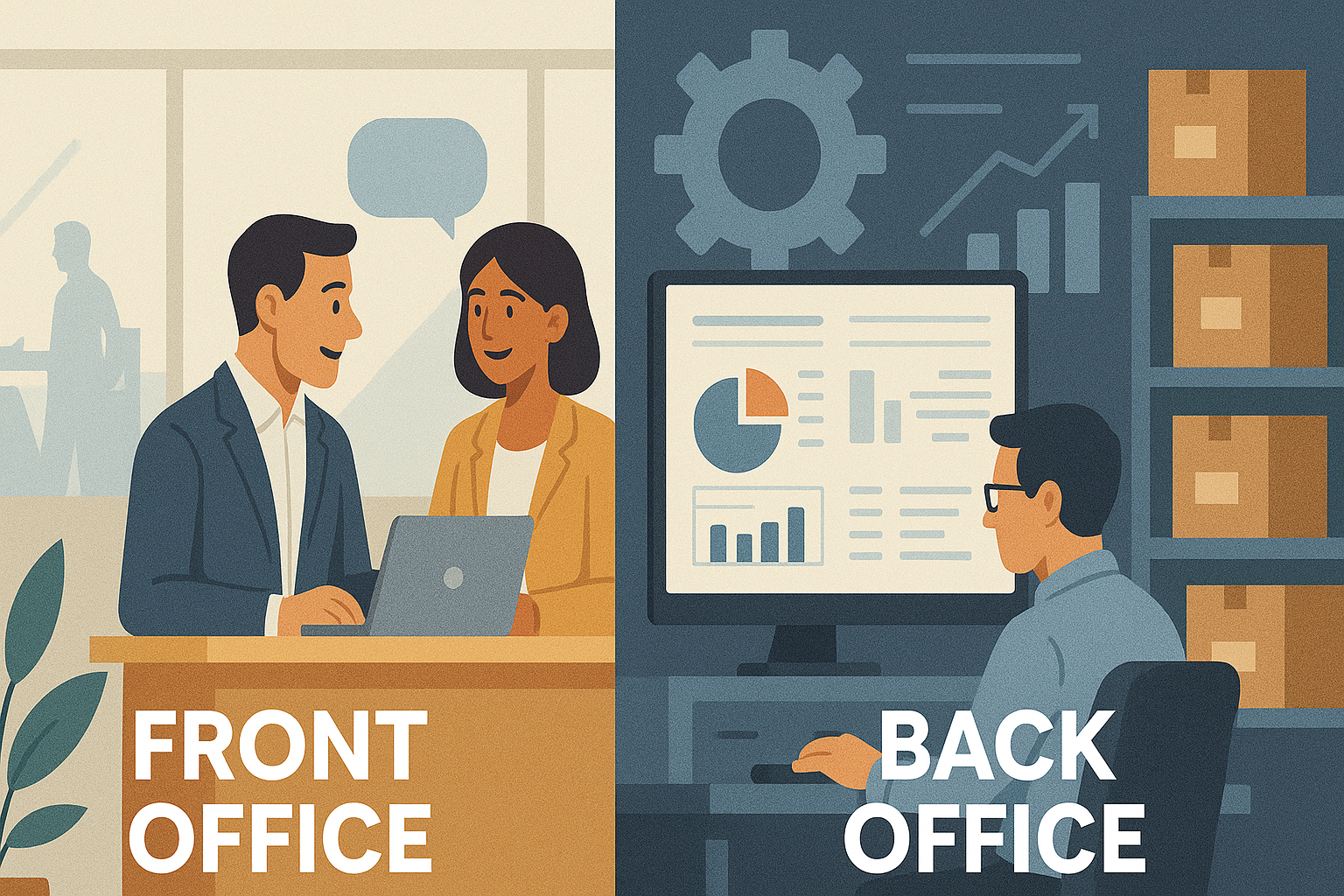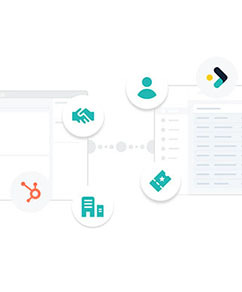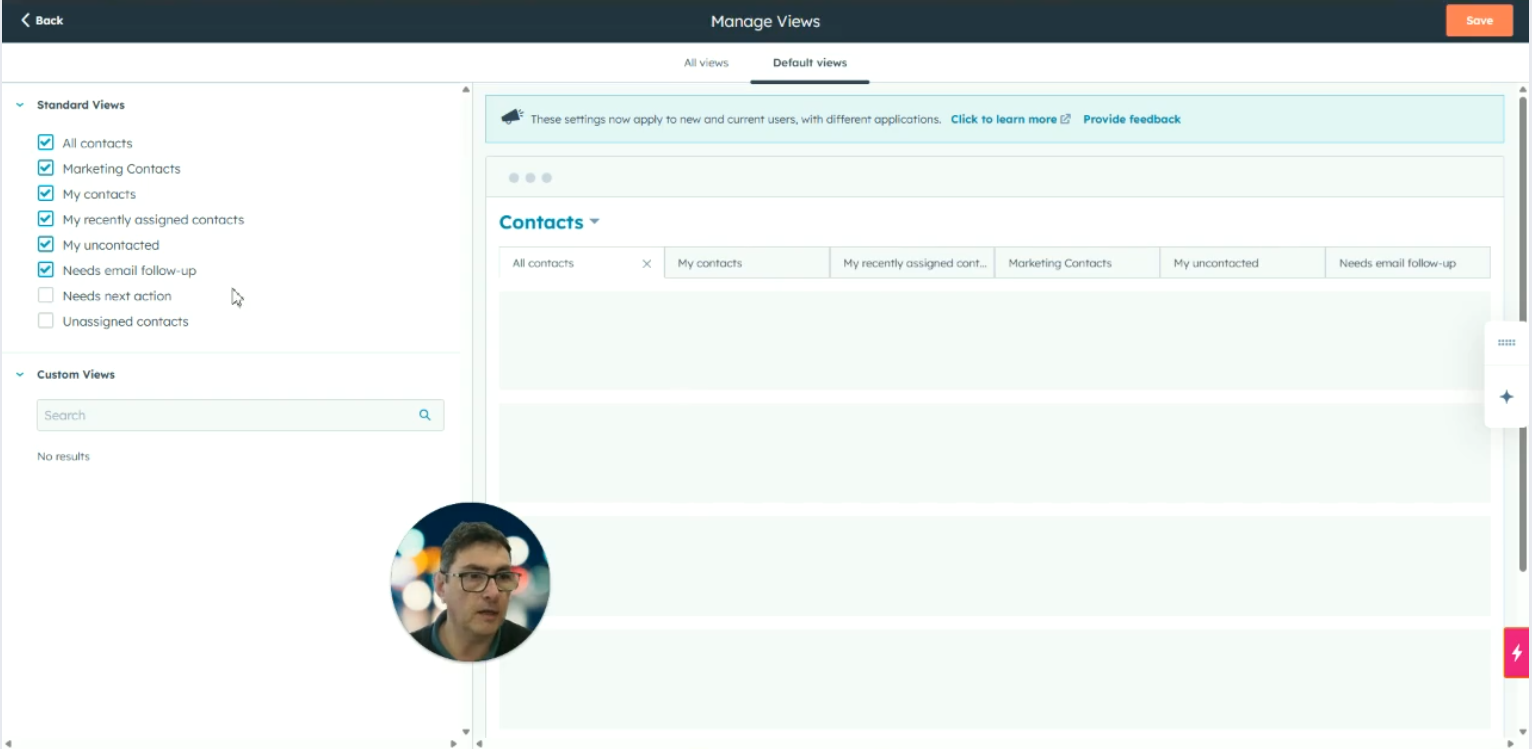Why Should I Integrate HubSpot and OrderWise?
If your business is using both HubSpot CRM and OrderWise ERP (or any systems for that matter), you've probably found yourself wondering: Do I really...
4 min read
Bradley Michel
:
Jul 3, 2025 3:00:00 PM

In today’s fast-paced business environment, having a seamless connection between your customer-facing teams and operational backbone is no longer a luxury — it’s a necessity. Integrating your HubSpot CRM with your ERP system can unlock significant efficiencies, enhance data accuracy, and drive better business outcomes.
In this article, we'll explore why HubSpot CRM and ERP integration is so powerful, the different ways you can achieve it, and why the Orderwise Sync HubSpot Connector is the ideal solution for wholesale, distribution, and manufacturing businesses.
HubSpot’s App Marketplace offers pre-built integrations for popular ERP systems such as NetSuite, Microsoft Dynamics 365, and SAP. These connectors are typically easy to set up and can handle basic data syncing, though they may have limitations when it comes to custom fields and specific workflow automations.
For businesses with complex requirements, custom integrations using HubSpot’s APIs and your ERP’s APIs provide maximum flexibility. While highly tailored, these integrations require more technical expertise, development time, and ongoing maintenance.
Platforms like Zapier, Workato, or Dell Boomi act as bridges between HubSpot and ERP systems. These tools often provide low-code or no-code solutions for data syncing and process automation, but may still require technical configuration for more sophisticated use cases.
Certified HubSpot solutions partners or ERP implementation consultants can help build and maintain integrations aligned to your business processes. While potentially higher in upfront cost, these partnerships ensure deep expertise and long-term support.
At Cogent Connective, we understand the unique challenges faced by wholesale, distribution, and manufacturing businesses. Many of our clients rely on Orderwise as their ERP system — a powerful platform for managing inventory, warehousing, and supply chain operations.
That’s why we developed the Orderwise Sync HubSpot Connector, designed specifically to bridge the gap between HubSpot CRM and Orderwise ERP seamlessly.
Explore the Orderwise Sync HubSpot Connector
Our connector is built with the operational complexity of these sectors in mind. It aligns sales, marketing, inventory, and financial data to give you a true end-to-end view of your business.
Key data such as customer records, sales orders, inventory levels, and payment statuses flow both ways — ensuring HubSpot and Orderwise always reflect real-time information. Sales teams can quote accurately, operations can plan confidently, and finance can forecast more reliably.
Orders from HubSpot are instantly pushed into Orderwise, eliminating manual re-entry and accelerating order fulfilment. This streamlines invoicing and improves cash flow — critical for businesses with high order volumes.
With integrated data, your team has a complete picture of each customer. Reps can proactively inform clients about stock availability, order status, and payment updates — creating smoother, more satisfying interactions.
Leverage unified dashboards that blend HubSpot’s marketing and sales data with operational and financial insights from Orderwise. This consolidated view supports data-driven decision-making at every level of your business.
Here are some real-world ways that Orderwise Sync HubSpot Connector helps streamline operations:
Streamlined processes reduce internal friction, allowing your teams to focus on high-value, revenue-generating activities rather than chasing down data.
Faster invoicing and order processing tighten up your cash cycle, providing more financial agility and stability — crucial for sectors with complex supply chains and tight margins.
Better visibility into orders and proactive communication build trust and strengthen long-term customer relationships.
With clearer visibility into sales performance, production metrics, and financial health all in one place, leadership can make more informed, timely decisions.
Automation reduces reliance on manual processes and headcount as your order volumes grow, making it easier to scale operations without increasing overhead.
As the business landscape becomes more competitive and customer expectations rise, integrating HubSpot CRM with your ERP system is no longer optional — it’s a strategic imperative.
Our Orderwise Sync HubSpot Connector empowers you to move faster, serve better, and scale smarter. You’ll gain the ability to align your front and back office teams, deliver exceptional customer experiences, and make data-driven decisions that drive growth.
Choosing the right integration strategy can feel overwhelming — but you don’t have to navigate it alone. At Cogent Connective, we specialise in helping businesses like yours transform their operations through thoughtful, tailored integrations.
Whether you're looking to connect HubSpot with Orderwise or explore a broader systems integration strategy, we’re here to help.
Explore the Orderwise Sync HubSpot Connector today, or contact us to discuss your integration roadmap.
Integrating HubSpot CRM and ERP systems isn’t just a technical upgrade — it’s a strategic transformation. By unifying your data, aligning your teams, and automating your processes, you’re setting your business up for faster growth, stronger customer relationships, and greater operational resilience.
With the right integration approach — and the right partner — the possibilities are limitless. Let’s make it happen, together.
Problem:
Sales and customer service teams in HubSpot don’t have real-time access to operational data — like inventory levels, order status, or shipment tracking — that sits in the ERP.
Solution:
Integration synchronizes product availability, order status, and fulfilment data into HubSpot. This enables sales reps to promise realistic delivery dates and provide accurate updates without chasing the warehouse or finance teams.
Problem:
Manually re-keying orders, updating payment status, or copying customer information between CRM and ERP leads to errors and inefficiencies.
Solution:
An integrated system automatically syncs orders, invoices, payment statuses, and customer data. This reduces admin workload, eliminates duplicate data, and minimizes costly mistakes (like incorrect shipments or mis invoiced orders).
Problem:
Without integrated data, sales and service teams can’t quickly answer questions like “Where’s my order?”, “What’s my account balance?”, or “When can I expect delivery?”
Solution:
Sales and support teams get instant visibility into ERP data from within HubSpot, so they can respond faster and improve customer trust and satisfaction.
Problem:
Without linking sales pipeline data (HubSpot) and operational/financial data (ERP), it’s hard to generate reliable forecasts for revenue, production, or inventory needs.
Solution:
Integration enables unified dashboards that combine future pipeline opportunities with confirmed orders and real-time stock levels. This supports more accurate demand planning and capacity management.
Problem:
Orders get delayed because sales orders need to be manually entered into the ERP, and invoice generation or payment tracking happens in separate systems.
Solution:
Sales orders from HubSpot automatically flow into the ERP for processing, and payment updates sync back to HubSpot. This speeds up fulfilment and reduces days sales outstanding (DSO).
Problem:
Marketing teams can’t see purchase history or customer lifecycle data from the ERP, making targeted cross-sell or upsell campaigns difficult.
Solution:
Integration enriches HubSpot contact records with transactional data (e.g., products purchased, average order value), allowing more sophisticated and timely personalized campaigns.
Here's some others we think you'll love

If your business is using both HubSpot CRM and OrderWise ERP (or any systems for that matter), you've probably found yourself wondering: Do I really...

Customizing CRM contact tabs helps streamline your workflow by letting you add, reorder, and manage views— ensuring the most relevant contact...
HubSpot is more than just a CRM. It’s a strategic growth platform that, when used correctly, can transform how you generate leads, manage deals,...